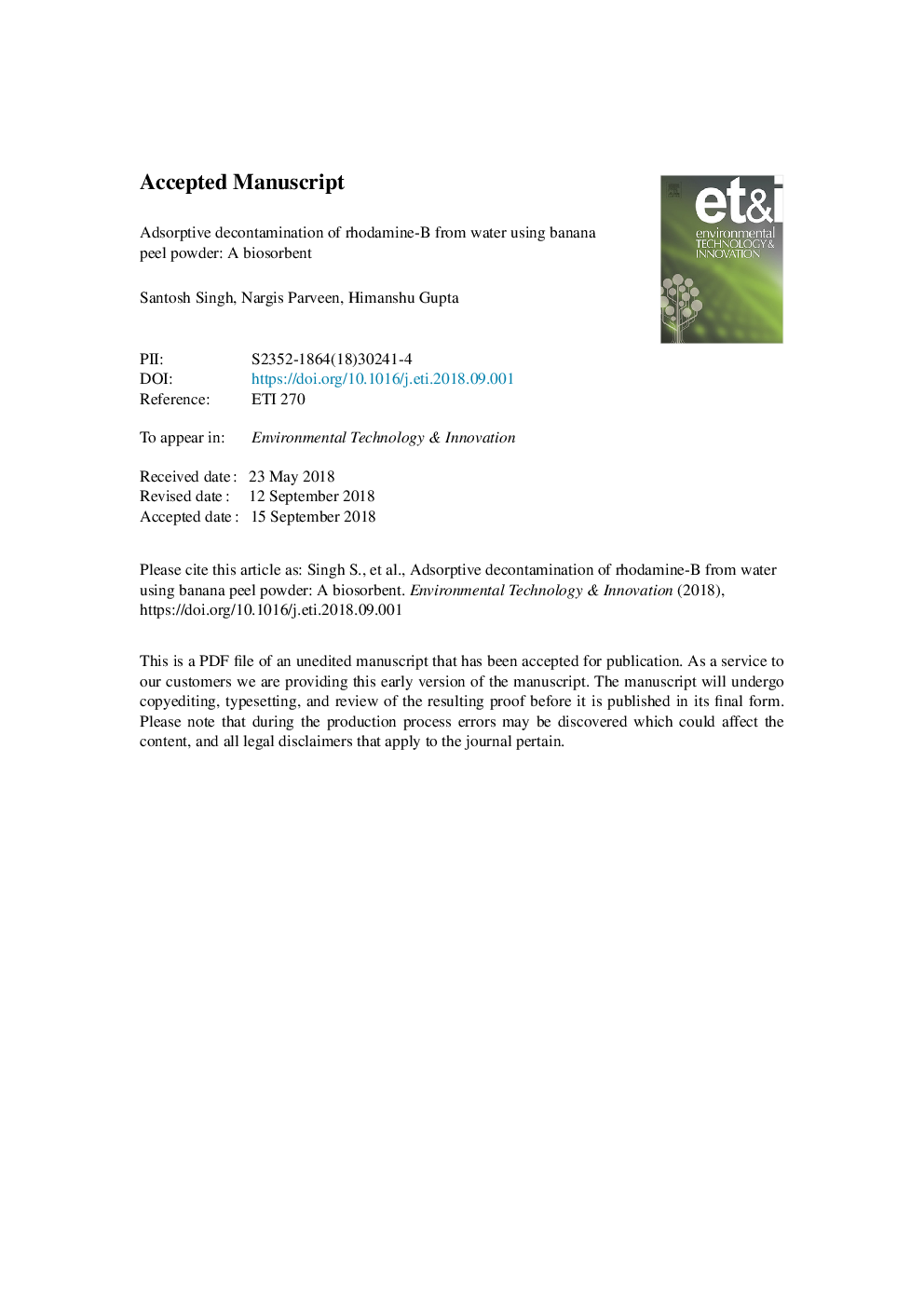| Article ID | Journal | Published Year | Pages | File Type |
|---|---|---|---|---|
| 11033360 | Environmental Technology & Innovation | 2018 | 26 Pages |
Abstract
Dyes are potential environmental contaminants, liberated in the aqueous streams by the wastewaters of different industries like textiles, pulp, leather, cosmetics, food and paper industries. The present study is focused on the use of waste banana peel as biosorbent for the inexpensive and efficient removal of dye from aqueous streams. Rhodamine-B is a cationic dye which is basic in nature and soluble in water. It is toxic and can cause harmful effects such as skin irritation allergic dermatitis and cancer. Batch adsorption experiments were performed and parameters such as contact time, biosorbent dose, pH and temperature were varied. The samples under investigation were analyzed by UV spectrophotometer. The obtained data at equilibrium were examined for the modeling of Langmuir and Freundlich isotherms. The value of R2 (correlation coefficient) indicates that the data were better fitted to Langmuir adsorption model. The contact time of 60 min was selected for the adsorption of rhodamine-B on banana peel powder. The influence of biosorbent dose on sorption of rhodamine-B was observed in range 0.04-0.5 g for 60 min with 30 mL of dye solution. The maximum removal for rhodamine-B on the biosorbent surface was observed to be 81.07%. The present work produces easily acquirable, eco-friendly and cheap biosorbent capable of efficient removal of dyes from aqueous media.
Related Topics
Life Sciences
Environmental Science
Environmental Chemistry
Authors
Santosh Singh, Nargis Parveen, Himanshu Gupta,
